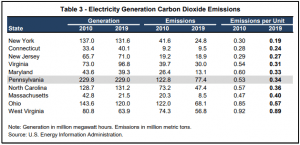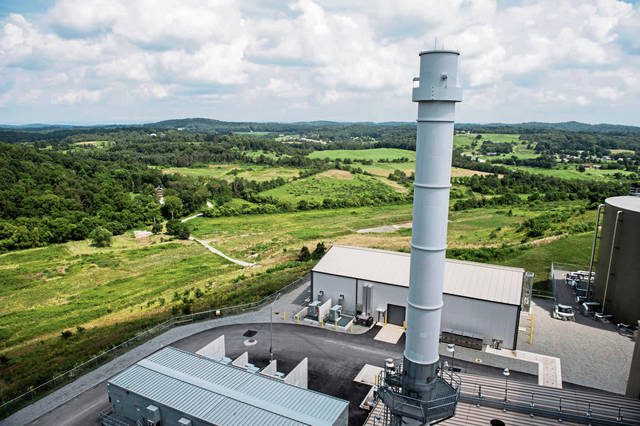Carbon dioxide emissions declined, and consumers enjoyed even greater energy savings as natural gas became Pennsylvania’s dominant source for electricity generation, a new non-partisan state report confirms. Over the last five-years, the share of natural gas in Pa. power generation rose from 28% to 52%, the state’s Independent Fiscal Office reports, mirroring similar trends across the United States.
Alongside this growth in natural gas power generation, Pennsylvania reduced its carbon emissions per kilowatt hour generated by 37% and residential electricity prices declined an additional 4.6%.
This trend, according to the IFO, is “due to increasing natural gas production that provided a relatively low-cost input for electricity generators in the state.”

The reduction in climate warming carbon emissions came alongside consumer energy savings and were made possible through a competitive generation market where power generators can leverage the abundance of domestically produced, clean natural gas.
Through the use of natural gas, Pennsylvania continues to make meaningful climate and environmental progress without jeopardizing jobs or spiking consumer energy prices. With the United States being the world’s top natural gas producer, similar progress is being made on a national level.
The U.S. has made significant carbon emission reduction gains over the past 15-years primarily due to natural gas use in power generation, according to data released from the Berkeley Lab. In the early 2000s, emissions tied to electricity sector were poised to surge, but “the U.S. cut power sector emissions by 52% below projected levels – we are now ‘halfway to zero,’” Berkeley Lab scientist and lead researcher, Ryan Wiser, said.
While renewable energy resources increased 79% more than analysts in 2005 predicted, natural gas far outpaces that with a 115% growth rate over the same period. In addition to carbon dioxide emission reductions, sulfur and nitrogen pollutants also declined and improved public health. The researchers estimate premature deaths fell from 38,000 in 2005 to 3,100 in 2020 – representing a 91% decrease.
Regionally, natural gas makes up 44% of PJM’s total capacity, per its 2021 summer reliability report, and has seen power generation emissions (including carbon dioxide, nitrogen oxides, and sulfur dioxide) decline 11% from 2019 levels.
IFO’s report also notes the Commonwealth as being the nation’s number one power exporter, distributing a steep 46% more electricity to the nation than Alabama – the second highest exporting state. Nearly every other state on listed in IFO’s report are net electricity importers, making Pennsylvania’s emissions and generation rates look higher.
As state and federal policymakers weigh various energy environmental and tax policies – including RGGI, a nationwide methane tax, and various so-called subsidies and bailouts all intended to pick winners and losers in the power generation sector– the clear, non-partisan data confirms leveraging abundant, affordable and clean natural gas resources for power generation through competitive markets is the solution to impactful climate and environmental progress.





